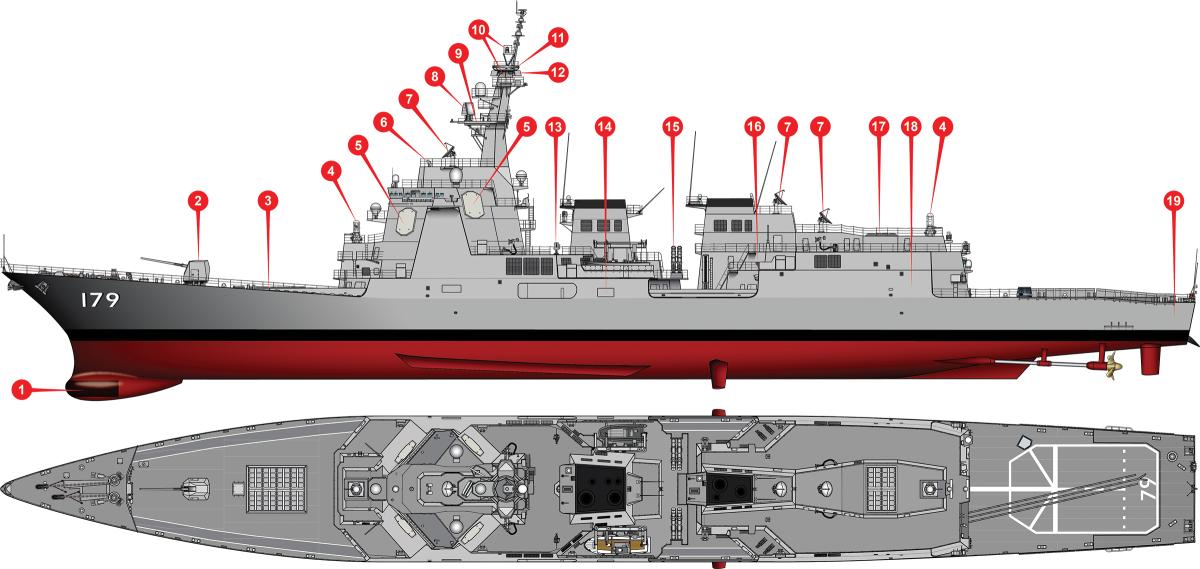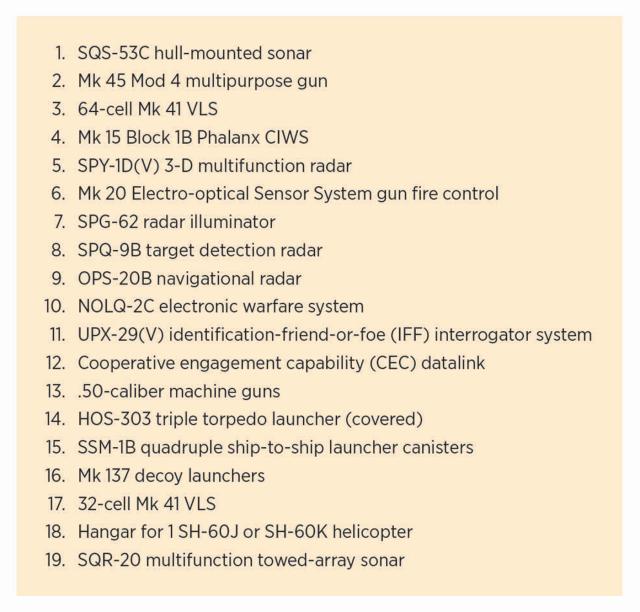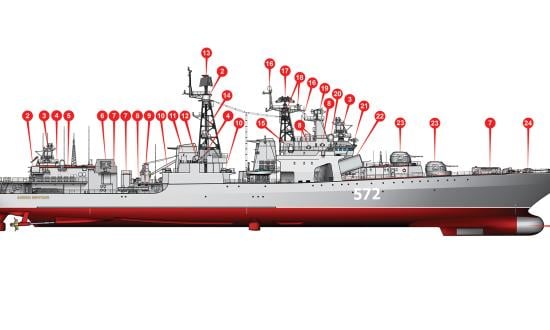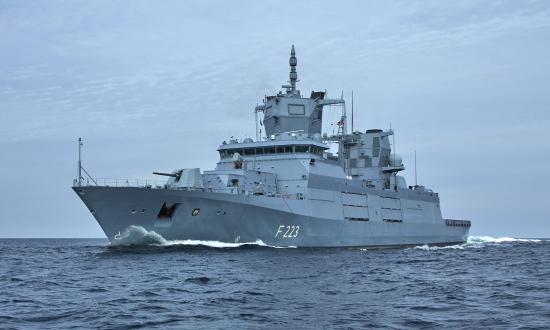The Maya, Japan’s newest guided missile destroyer, was launched on 30 July 2018 and commissioned on 19 March 2020. She is the namesake of a new class of 8,200-ton Aegis-equipped warships. The ship is 558 feet long, with a 69-foot beam, and operated by a crew of 310. Initially known as the 27DD program, the Maya class is an improved variation of the Atago class, itself an improved version of the Kongo class. All three Japanese Aegis destroyer classes share strong common lineage with the U.S. Navy’s Arleigh Burke class.
The Maya was designed from the outset to optimize ballistic-missile defense (BMD) technology and integrate its capabilities with the Japanese fleet and allied naval assets. Its cutting-edge systems include the Aegis SPY-1D(V) 3-D multifunction radar, plus a new cooperative engagement capability (CEC), helping the ship form part of a real-time sensor network that can share air-target data among other CEC-equipped units.
The multimission Maya is fitted with 96 vertical launch system (VLS) missile tubes—64 cells forward of the bridge and 32 atop the helicopter hangar. These launchers can carry a mix of SM-3 Block IIA BMD Standard missiles (for midcourse defense against short- and intermediate-range targets), SM-2 or RIM-162 Evolved Seasparrow surface-to-air missiles (for medium- and short-range defense, respectively, against aircraft and cruise missiles), and new SM-6 Extended-Range Active Missiles (ERAMs), which have a range of more than 200 nautical miles and can be linked by CEC to provide air defense against enemy aircraft, cruise missiles, and short-range ballistic missiles in the terminal phase.
The Maya’s dedicated antiship weapons consist of 8 SSM-1B (Type 90) cruise missiles, with a range in excess of 80 nautical miles, but the SM-6 ERAM also provides a secondary antiship capability. To counter the submarine threat, the Maya is fitted with SQS-53C hull-mounted and SQR-20 multifunction towed-array sonars. Vertically launched antisubmarine rockets (ASRocs) carrying lightweight torpedoes can be launched from the VLS, and two triple torpedo tubes are mounted for short-range antisubmarine warfare. The Maya carries a single Mk 45 Mod 4 5-inch gun forward and two Phalanx Block 1B close-in weapon systems (CIWS). A single Mitsubishi SH-60J/K Seahawk helicopter can be carried in the hangar and operated from the flight deck.
The Maya incorporates a new combined gas-electric and gas (COGLAG) propulsion system, which provides a top speed of 30 knots while improving fuel efficiency and minimizing life-cycle costs compared with previous destroyers. The COGLAG arrangement optimizes power management and will make it easier to incorporate future, more advanced systems, such as directed-energy weapons.
A second ship of the class, the Haguro, began sea trials in June 2020 and is expected to commission in 2021.







